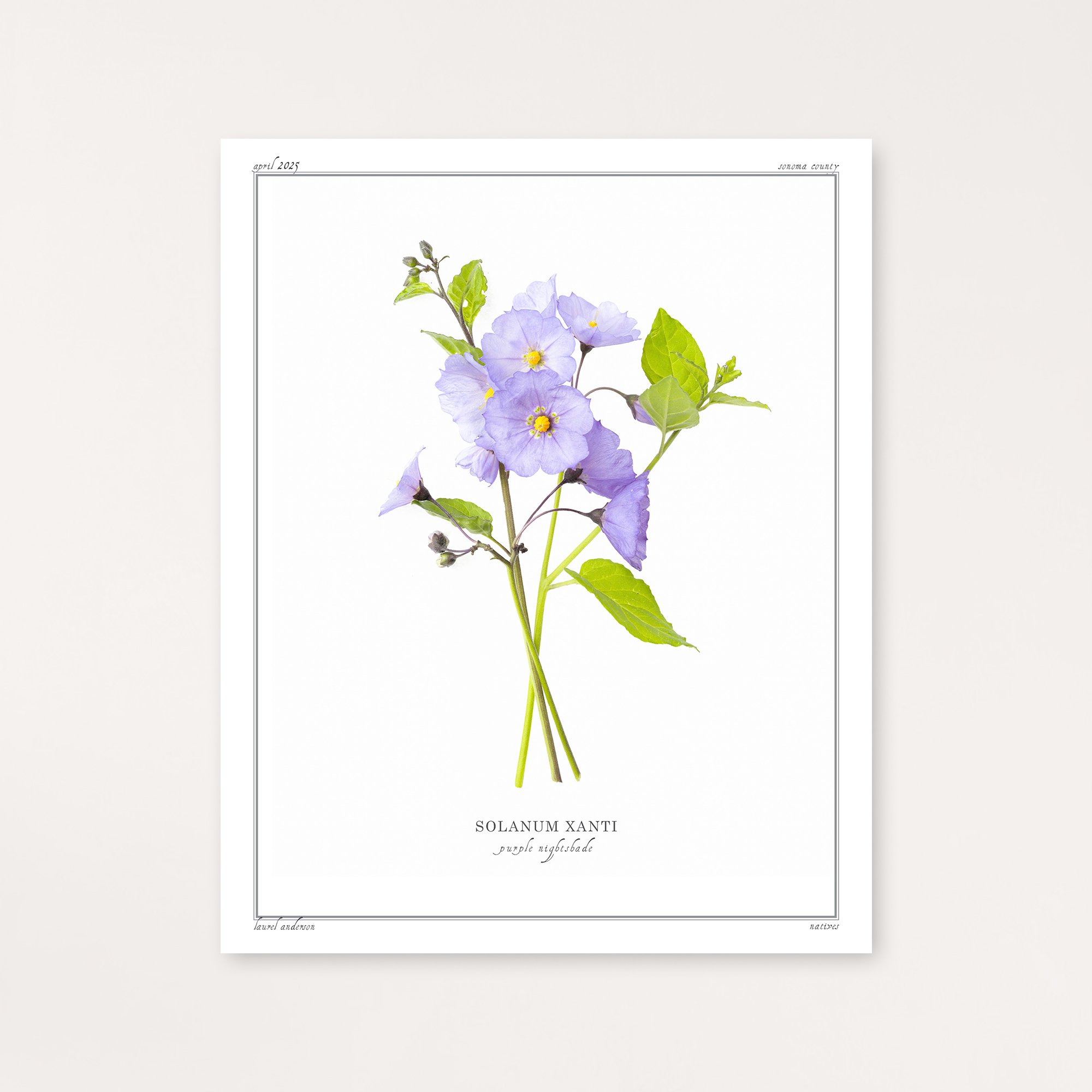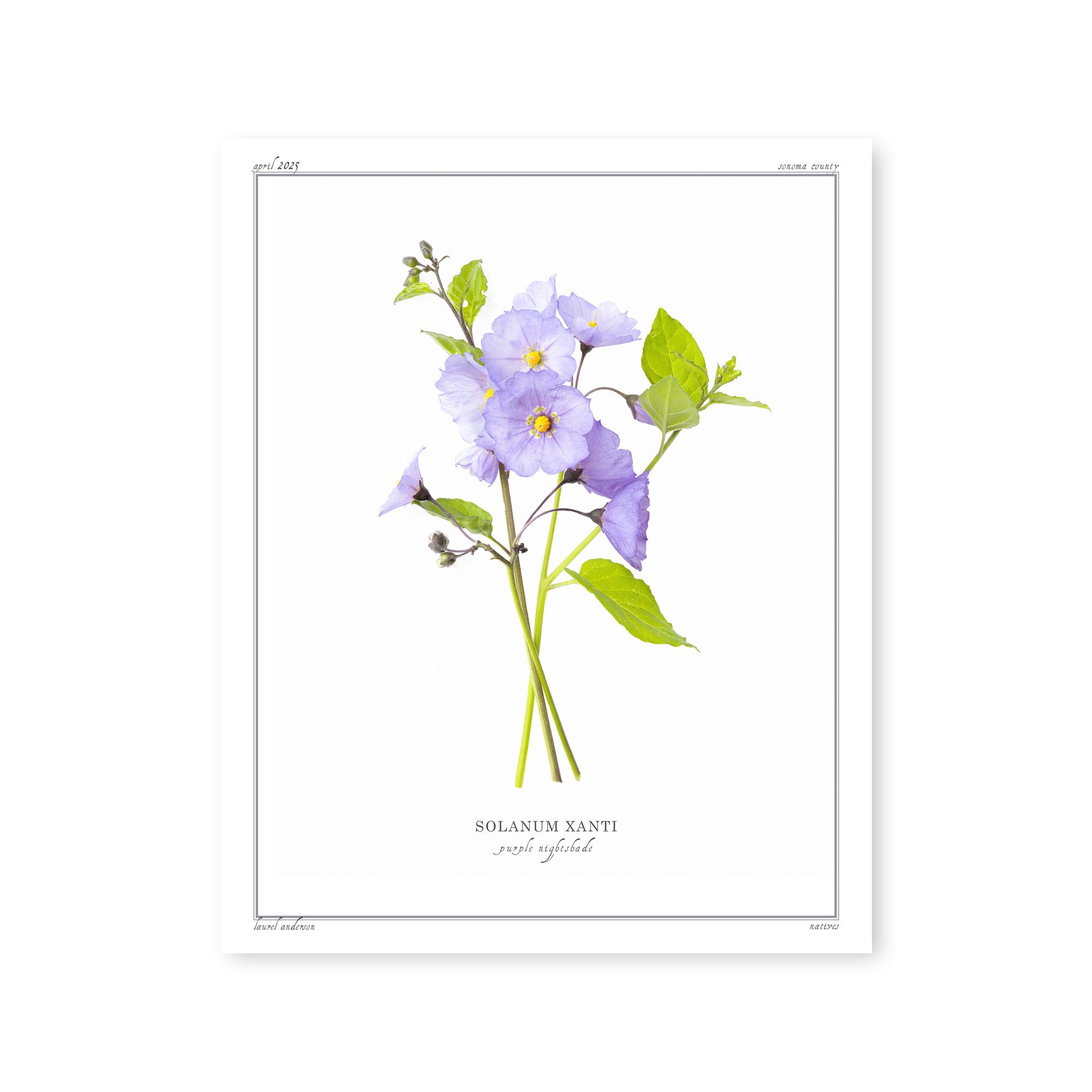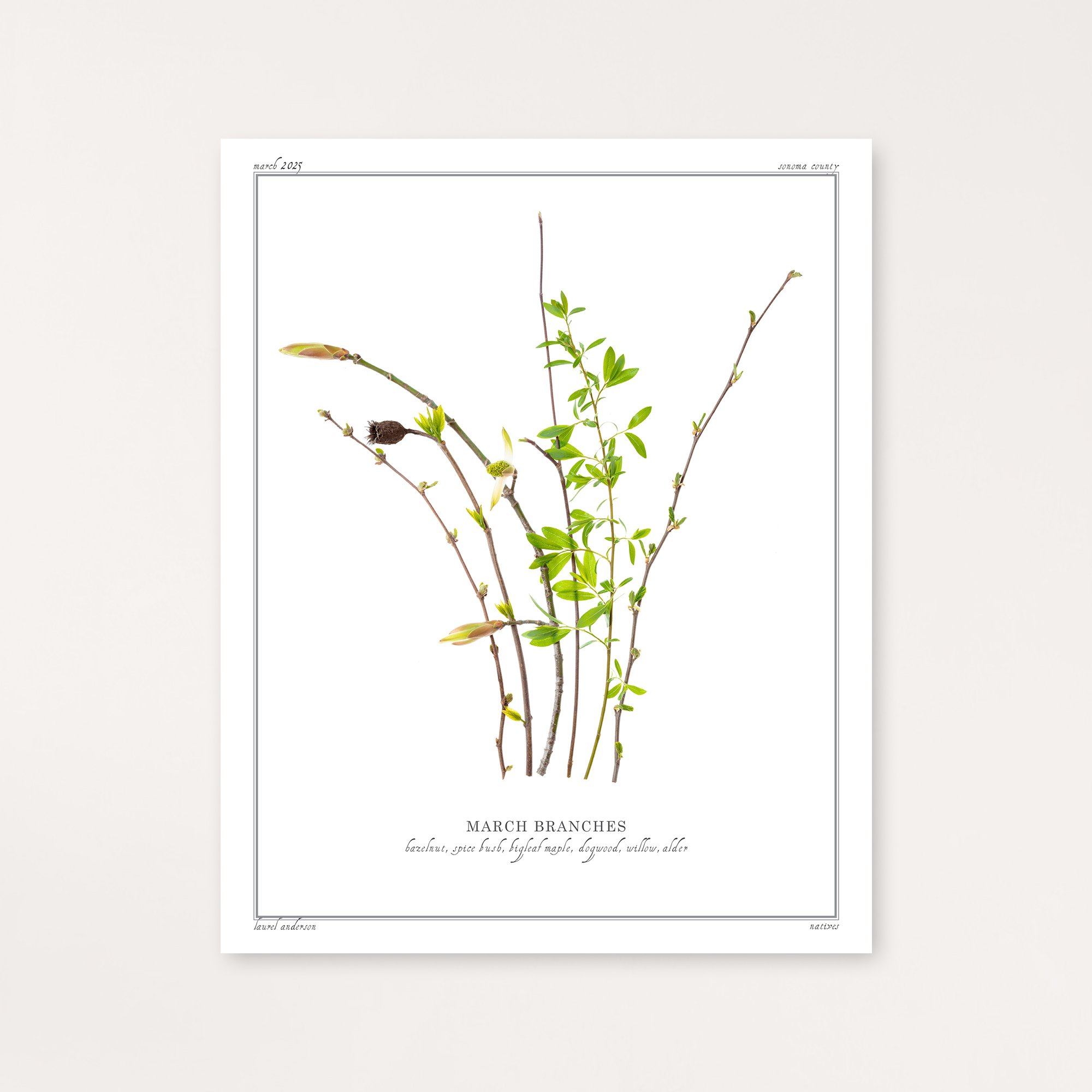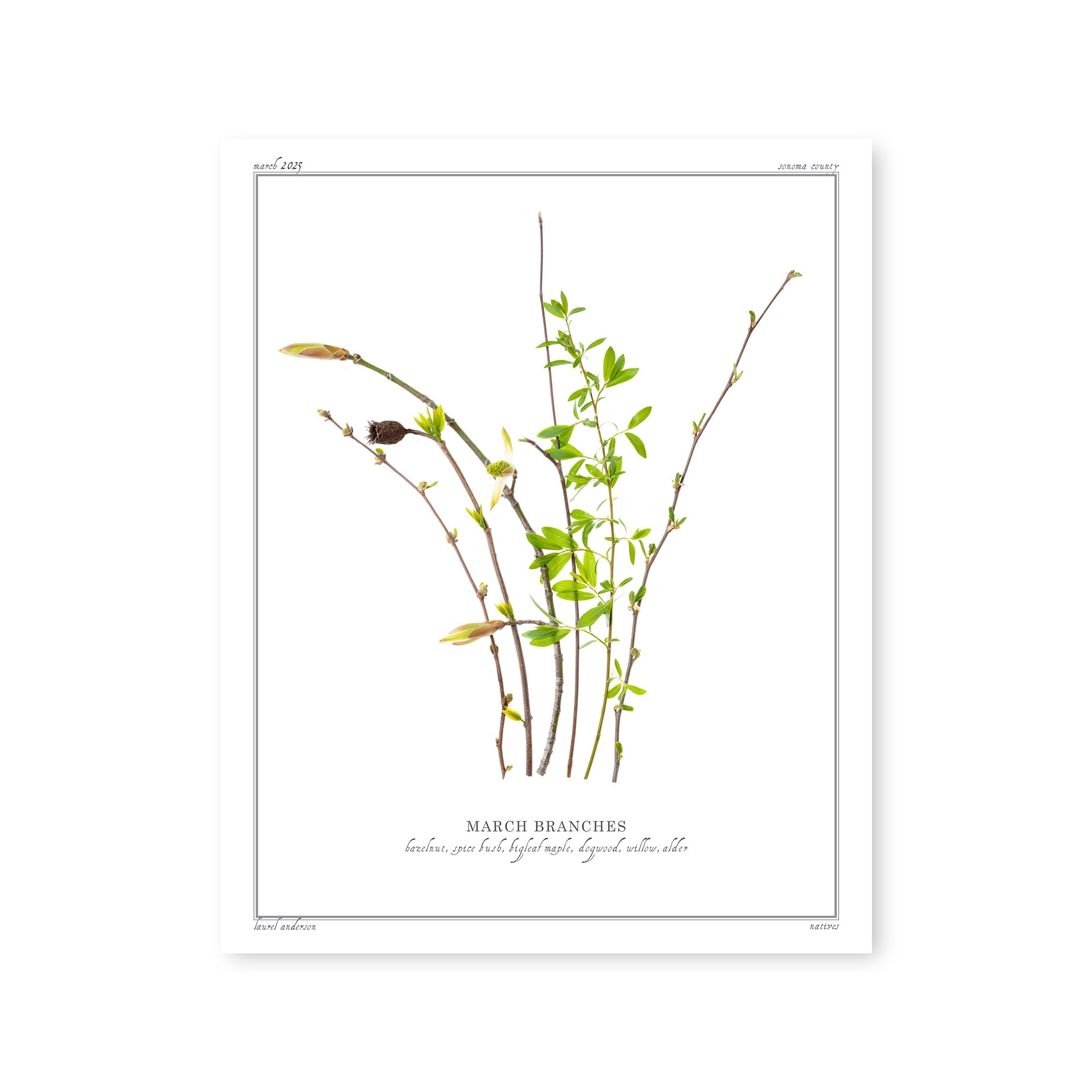 Image 1 of 2
Image 1 of 2

 Image 2 of 2
Image 2 of 2



Purple Nightshade
Purple Nightshade, Solanum xanti, brightens California’s chaparral, oak woodlands, and forest edges with its striking violet flowers with bright yellow centers winter through spring.
It hosts numerous moth and butterfly species as a larval food plant, while its purple flowers attract many types of pollinators. Native bees have co-evolved with it so that - when the bees vibrate their flight muscles at a certain frequency - the vibration forces pollen from the anthers.
Each print is made by the artist using archival quality pigment ink on Moab's Entrada Rag Bright 300 paper.
Purple Nightshade, Solanum xanti, brightens California’s chaparral, oak woodlands, and forest edges with its striking violet flowers with bright yellow centers winter through spring.
It hosts numerous moth and butterfly species as a larval food plant, while its purple flowers attract many types of pollinators. Native bees have co-evolved with it so that - when the bees vibrate their flight muscles at a certain frequency - the vibration forces pollen from the anthers.
Each print is made by the artist using archival quality pigment ink on Moab's Entrada Rag Bright 300 paper.






